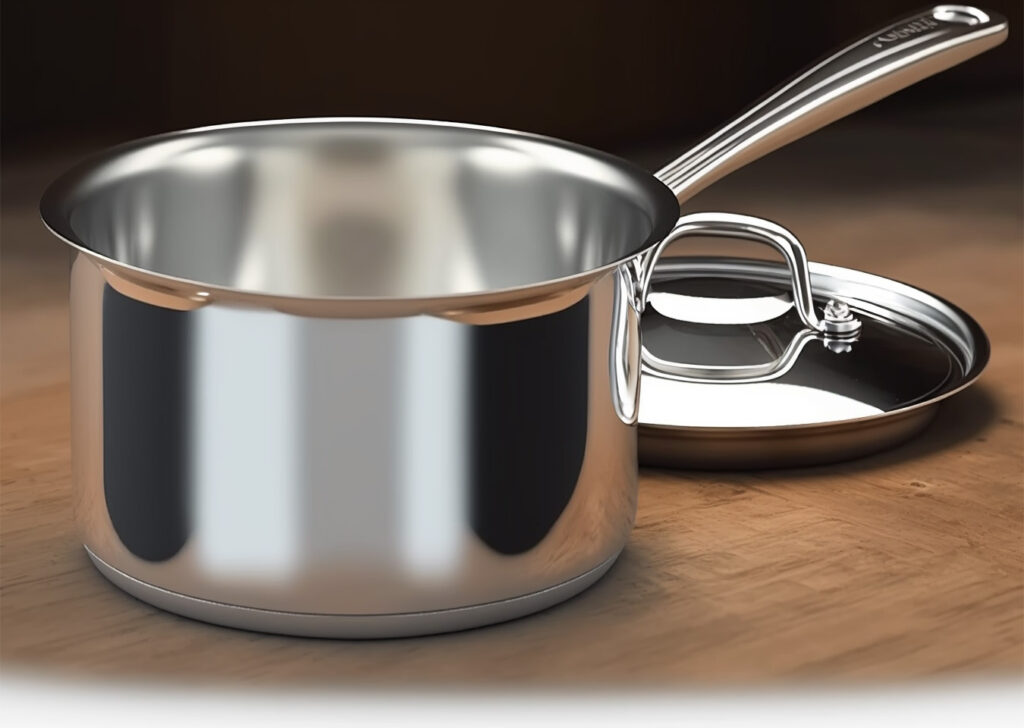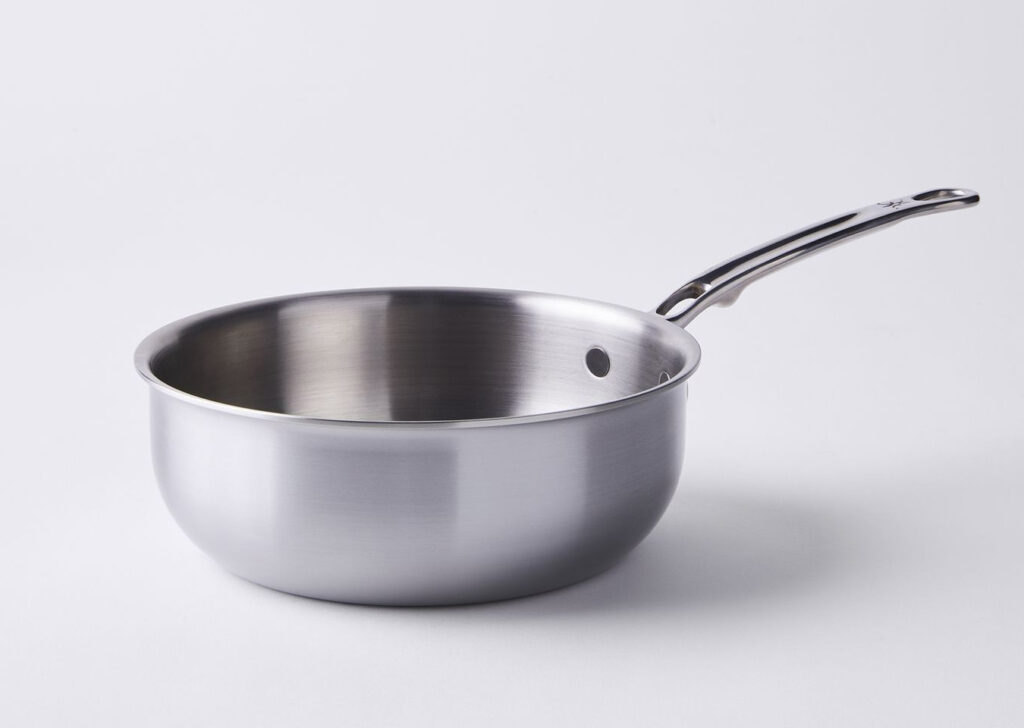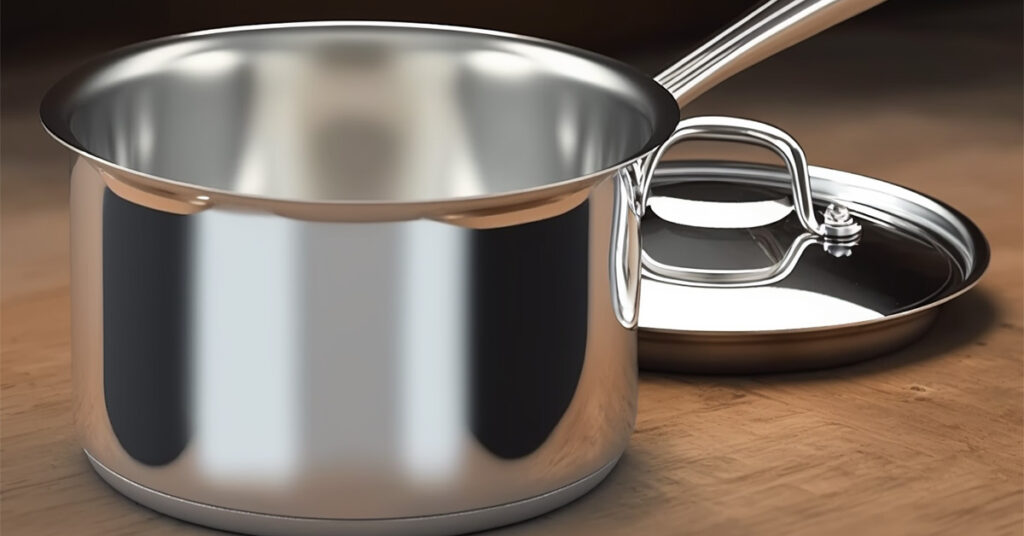Saucepan vs. saucier pan – which one should you choose?
Welcome, fellow food enthusiasts and aspiring home chefs! Today, we’re exploring this delicious dilemma and diving into the exciting world of cookware. If you’ve ever stood in front of your pots and pans, puzzled by which one to use for a particular dish, you’re not alone. With so many options available, it’s easy to get overwhelmed. But fear not!
Quick Answer: Sauce Pan vs Saucier What’s the Difference?
Saucepans feature a flat bottom and tall, straight sides, while sauciers have sloped walls and a wide opening. While both are great for boiling water and preparing sauces, sauciers are the better option when it comes to recipes that need frequent stirring. There are some other key differences we shall go into as well.
Table of Contents
In this post, we’ll uncover the key differences between saucepans and saucier pans, their uses, and how to determine which one is the perfect fit for your culinary needs. So, let’s embark on this kitchen adventure together and demystify the saucepan vs. saucier pan conundrum once and for all!
A saucepan is a versatile cooking pot with tall, straight sides and a flat base, ideal for simmering, boiling, and reheating. In contrast, a saucier pan features rounded sides and a wider base, making it perfect for whisking, reducing sauces, and cooking delicate foods. The choice between the two depends on your cooking preferences and the dishes you often prepare. In the following, we go into greater depth on the differences between the two.

Exploring the Versatile Saucepan
The saucepan is a true workhorse in the kitchen, designed to handle a wide variety of cooking tasks with ease. Its tall, straight sides and flat base make it a go-to choice for simmering soups, cooking grains, and boiling water for pasta. The even heat distribution provided by the flat base ensures consistent results, while the long handle and tight-fitting lid make it simple to maneuver and control.
The saucepan is available in various sizes, typically ranging from 1 to 4 quarts, allowing you to choose the perfect option for your needs. In summary, a saucepan is a versatile and reliable choice for everyday cooking, particularly when it comes to liquid-based dishes or recipes that require precise temperature control.

What is a Saucier Pan and Its Advantages?
A saucier pan, also known as a chef’s pan, is a unique piece of cookware characterized by its rounded sides, wider base, and a typically shorter height compared to a saucepan. These design features make it an excellent choice for whisking and stirring, as the rounded sides allow for more efficient mixing and help prevent food from getting stuck in corners.
The saucier pan truly shines when it comes to preparing sauces, custards, and gravies, as its design aids in even heat distribution and facilitates reduction without scorching. Moreover, the pan’s shape makes it ideal for cooking delicate ingredients like risotto, polenta, or foods that require constant stirring. Its versatility extends beyond sauces and delicate dishes, as it can also be used for shallow frying, sautéing, and even braising small quantities of food. Overall, a saucier pan is a valuable addition to any kitchen, particularly for those who enjoy creating smooth, velvety sauces and mastering intricate cooking techniques.
Saucepan and Saucier Pan Face-Off: Making the Right Choice
When comparing saucepans and saucier pans, it’s essential to consider their unique features and advantages. A saucepan’s straight sides and flat base make it perfect for tasks that require controlled evaporation, like simmering soups or boiling water. The fitted lid and various sizes available add to its versatility, making it a staple in any kitchen.
On the other hand, a saucier pan’s rounded sides and wider base make whisking and stirring easier, reducing the risk of food sticking in corners. This design is ideal for creating smooth sauces, gravies, and custards or cooking delicate ingredients that need constant stirring.
Ultimately, the choice between a saucepan and a saucier pan depends on the types of dishes you often prepare and the techniques you employ in the kitchen. Some cooks find value in having both types of pans in their arsenal, while others may prefer one over the other based on their cooking style and needs.
Saucepan vs. Saucier: Comparison Chart
Navigating the Cookware Market: Brands and Budgets
When it comes to selecting a saucepan or a saucier pan, the market offers a wide array of brands and price ranges to fit various budgets and preferences. Some of the top brands known for producing high-quality saucepans and saucier pans include All-Clad, Cuisinart, Le Creuset, and Calphalon. These brands offer a variety of materials, such as stainless steel, non-stick, and enameled cast iron, each with its unique advantages and care requirements.
Price ranges for saucepans and saucier pans can vary significantly, starting from affordable options under $50 to premium choices exceeding $300. When choosing cookware, consider factors like heat conductivity, durability, and ease of cleaning. Investing in a high-quality pan that matches your cooking style and needs can result in better performance and longevity, potentially saving you money in the long run.
Conclusion: Deciding Between Saucepan and Saucier Pan – Which One Suits You Best?
In the end, the choice between a saucepan and a saucier pan comes down to your individual cooking preferences, needs, and the dishes you frequently prepare.
Both types of cookware have their unique advantages, with saucepans being versatile and suitable for simmering, boiling, and reheating, while saucier pans excel in whisking, reducing sauces, and cooking delicate foods. By considering your culinary habits and requirements, you can make an informed decision and equip your kitchen with the right tools for your personal cooking adventures. And remember, there’s no rule against having both types of pans in your collection if they suit your needs. Happy cooking!








